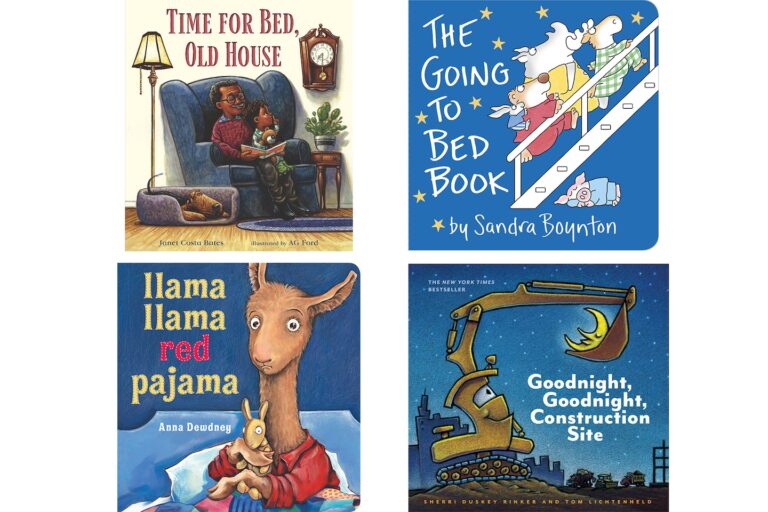Yet judging from the children’s section of any bookstore, you’d think bedtime books were the secret to getting wiggly little bodies to settle down and nod off. So many of them, from classics such as “Goodnight Moon,” “Little Fur Family” and “Harold and the Purple Crayon” to contemporary favorites such as “Goodnight, Goodnight Construction Site,” “Llama Llama Red Pajama” and the Good Night Our World series, end with the main characters heading off to dreamland. The implied sequence of events is clear: This kid/animal/machine is going to sleep now, and you will, too.
Of course, there are also myriad books with the overt aim of getting kids to sleep — “The Going to Bed Book,” “Goodnight Already!” and “The Rabbit Who Wants to Fall Asleep,” to name just a few. So many children’s books are either explicitly or implicitly about sleep, it can make a weary parent wonder why this is such a perennial theme, and whether these books actually have the desired effect.
“As a parent, I was always way more tired than my kids were,” says Janet Costa Bates, author of the children’s book, “Time for Bed, Old House,” which ends with not just the child but his grandfather and his grandfather’s entire house falling asleep.
Like Bates, I view bedtime as a reward for making it through the day. But for kids, experts say, it can feel like just the opposite. “For many kids, bedtime resistance is about not wanting to stop doing fun activities. Of course they would prefer to keep playing with their Legos or watching their favorite show rather than lying in a dark, boring room,” says Kate Lyn Walsh. Walsh is a behavioral sleep psychologist at Riley Children’s Health and assistant professor of clinical pediatrics at the Indiana University School of Medicine.
Walsh, like most pediatricians and sleep experts, suggests establishing a soothing routine to ease the transition from party time to lights out. Science bears this out: Studies suggest that nighttime routines benefit not just the quality of kids’ sleep, but also their overall well-being in early childhood. While those routines can be as prosaic as brushing teeth and putting on PJs, reading may be especially beneficial. Studies show reading before bed can help with word consolidation — the process by which new words become part of the reader’s vocabulary — and improve the bond between parents and children. Most important, it’s fun, but not too fun.
“We know that kids who have bedtime routines that do not involve electronics, and instead involve more calming activities, like reading, are able to sleep faster,” says Sabhyata Agrawal, a pediatric sleep specialist and assistant professor of pediatrics at Yale School of Medicine. “In my experience, [going to] sleep requires you to focus in a relaxed, calming manner. Reading helps you accomplish both goals.”
But does it matter what you read? Is it really as simple as reading stories about sleepy animals? It’s certainly an appealing concept and helps explain the popularity of books such as, “The Rabbit Who Wants to Fall Asleep.” Written by a motivational speaker and behavioral scientist, the book all but promises that its repetitive story will knock out even the most adamant sleep resister. An author’s note suggests that it be read in a “slow and calm voice,” and the reader is given parenthetical instructions to yawn throughout.
Like many somnolent tomes, “Rabbit,” was a bestseller, but that could well be a measure of parental frustration. After all, the parody bedtime book, “Go the F*** to Sleep,” was a bestseller, too.
The ideal bedtime reading, Agrawal says, should hit a sweet spot for engagement. “The content has to be interesting enough for children to want to listen to it in the first place and make it part of the routine,” she says. At the same time, a book with a lot of action and adventure or high emotional stakes may rouse the listener rather than nudging them toward slumber. Every parent must find this delicate balance on their own.
And there is room for variety. “Books don’t always have to be about going to sleep!” says Walsh. “They can be any book a child enjoys and wants to read. Reading together should be something that kids enjoy doing with their caregivers.”
Bates agrees. She read her two sons, now in their thirties, classics such as “Goodnight Moon.” But she says she also found the rhythm of poetry especially soothing, and, as her sons got older, nonfiction about subjects they were interested in. “It really doesn’t matter what the book is about,” Bates says. “The best book is the one the child reacts to well.”
Perhaps, then, I’ve been thinking about bedtime reading the wrong way. Instead of worrying so much about the bedtime part, which, at least in our house, happens when it happens, regardless of whether we’ve read “Sleep Like a Tiger” or “Cars and Trucks and Things That Go,” I should focus on the reading part.
After all, what I ultimately want for my son, even more than I want him to close his eyes and stop rustling around under the covers, is to love books as much as I do. To grow up to be the kind of person who stays up late with a great novel, telling himself he’ll turn off the light after just one more page.



